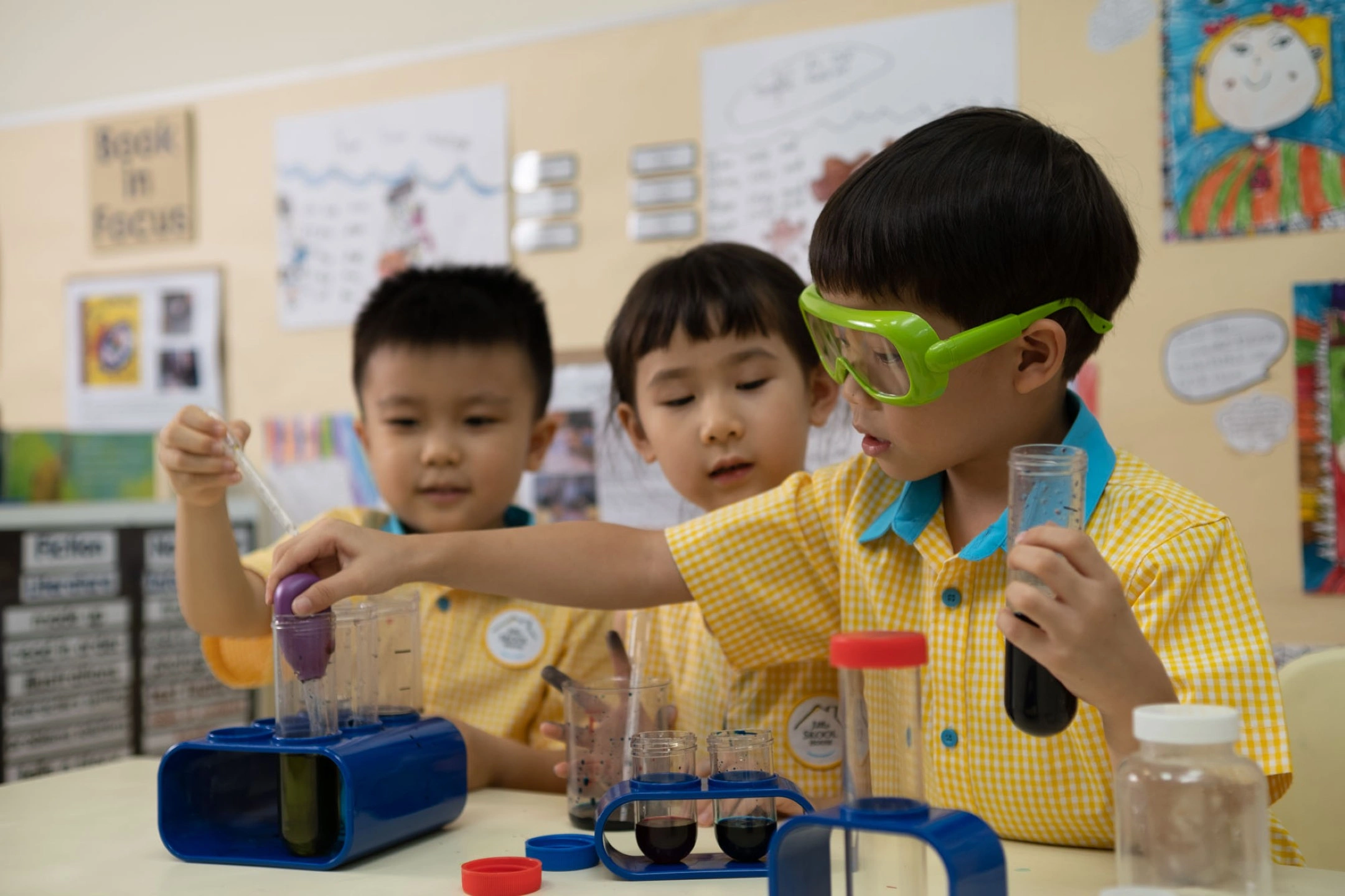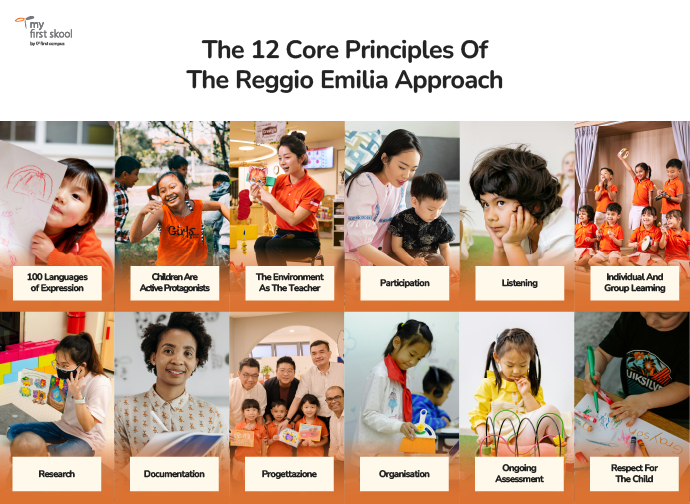Reggio Emilia Approach: Still Relevant in Singapore? (2025)


In recent years, the Reggio Emilia approach has captured the attention of educators and parents alike in Singapore.
Celebrated for its deeply respectful and child-centric philosophy, this pedagogical framework has found a meaningful place in early childhood settings around the world, including here on our island nation.
But what exactly is the Reggio Emilia approach, and does it still fit into Singapore’s diverse educational landscape?
In this article, we take a closer look at the principles, practices, and philosophy behind Reggio Emilia, while also considering how local preschools like My First Skool interpret and integrate similar ideas.
Whether you’re a parent considering preschool options or an educator curious about different teaching philosophies, this guide offers a clear and concise overview tailored for the Singaporean context.
The Reggio Emilia approach is a child-centred educational philosophy that originated in the town of Reggio Emilia, Italy, following World War II.
Developed by educator Loris Malaguzzi and local parents, it views children as competent, curious, and capable individuals who learn best through exploration and expression. The approach emphasises self-directed, experiential learning within a community-oriented environment.
Central to this philosophy is the belief that children possess “a hundred languages”—various ways of expressing their thoughts and ideas, such as through art, music, and movement.
The Reggio Emilia approach offers numerous advantages in early childhood education, fostering holistic development and a love for learning. Key benefits include:
The Reggio Emilia approach is grounded in twelve key principles that distinguish it from traditional educational models.

Children express themselves and make sense of the world through a multitude of languages, such as drawing, music, movement, and play.
Children are seen as competent, curious, and capable individuals who are active participants in their learning journey.
The learning environment is considered the “third teacher,” thoughtfully designed to be rich, engaging, and responsive to children’s needs and interests.
Everyone is involved in a child’s learning journey. Their education is global, with educators and families taking part, and the child takes the starring role.
A key component of the educational relationship is reciprocal listening between the children, adults, and the environment around them. This mutually cooperative attitude is ongoing and stimulates dialogue and dynamic learning.
As children move through the educational process, they are actively encouraged to be co-constructors in the journey. This is fostered by personal relationships with all around them—educators, peers, and the environment.
A constant process that’s shared between the children and the adults. This is documented and used to advance the educational process as discussed in the remaining points.
A visible and valuable method of understanding both individual and group learning journeys. This tangible documentation can be revisited, reconstructed, and assessed many times during the educational process and can be accessed by all involved—educators, children, parents, and family.
This Italian term describes the active process of how the environment, learning activities, teaching, staff development, and opportunities for participation are constantly evolving. It’s not pre-defined—it’s a dynamic process that’s constantly changing through observation and the above-mentioned research and documentation.
Every aspect of the approach needs careful consideration. This includes the spaces in which the children play, the time spent in each, as well as the managerial, administrative, and political elements of the learning community.
Continuous evaluation of children’s development and learning is integral to the approach, informing and guiding the educational process.
The success of the Reggio Emilia approach within early childhood education has been mirrored in continents across the world. With its roots in Italy, Europe, this unique method is guided by the concept that the teacher is more of a partner in learning, as opposed to presenting a structured educational syllabus.
In the Reggio Emilia approach, the teacher is viewed as a co-learner and collaborator, not just an instructor. Educators actively participate in children’s learning by planning activities based on their interests, asking questions to deepen understanding, and engaging alongside them in the learning process.
Teachers also serve as researchers, documenting children’s work and reflections to make learning visible and to inform future planning. This documentation fosters a reflective learning environment and demonstrates the value of children’s ideas.
Additionally, educators act as advocates, ensuring that children’s voices are heard and their rights are respected within the learning community.
The Reggio Emilia approach demands well-trained educators, meticulous documentation, and thoughtfully designed learning environments, making it a resource-heavy and potentially expensive model for preschools to implement.
As a philosophy-driven approach rather than a curriculum-based one, the Reggio Emilia method can vary significantly in its application across different schools, resulting in inconsistent educational outcomes.
While the approach excels in fostering creativity and social-emotional development, it may not give as much attention to foundational academic skills such as phonics, numeracy, or structured literacy development, which are critical in early education.
The effectiveness of the Reggio Emilia approach is closely tied to the educator’s ability to observe, document, and engage with children’s evolving interests. Inexperienced teachers may struggle to implement the approach to its full potential, leading to shallow or less meaningful learning experiences.
Although well-established in certain educational circles, the Reggio Emilia approach is less familiar to many compared to more traditional models like Montessori. This can pose challenges in gaining parental support or ensuring continuity in education across various learning stages.
While the Reggio Emilia approach offers valuable insights into child-centric learning, it may not always align perfectly with the needs of every child or family, especially within the context of Singapore’s educational landscape.
For parents seeking a balanced, structured yet flexible approach, My First Skool stands out as an excellent alternative.
With its commitment to providing a nurturing and holistic environment, My First Skool combines the best of both worlds—promoting creativity, social development, and critical thinking, while also ensuring a focus on foundational academic skills that are essential in Singapore’s competitive academic environment.
Through its localised preschool curriculum and emphasis on developing life skills, My First Skool provides a well-rounded educational experience that resonates with Singaporean families looking for a robust, future-ready start for their children.

Every year, over 26,000 families all across Singapore see their children benefit from our relationship-based curriculum – one that emphasises forging strong bonds between children, teachers and parents.
Find a centre near you or take a virtual tour to explore our learning environments and learn how your child can thrive.